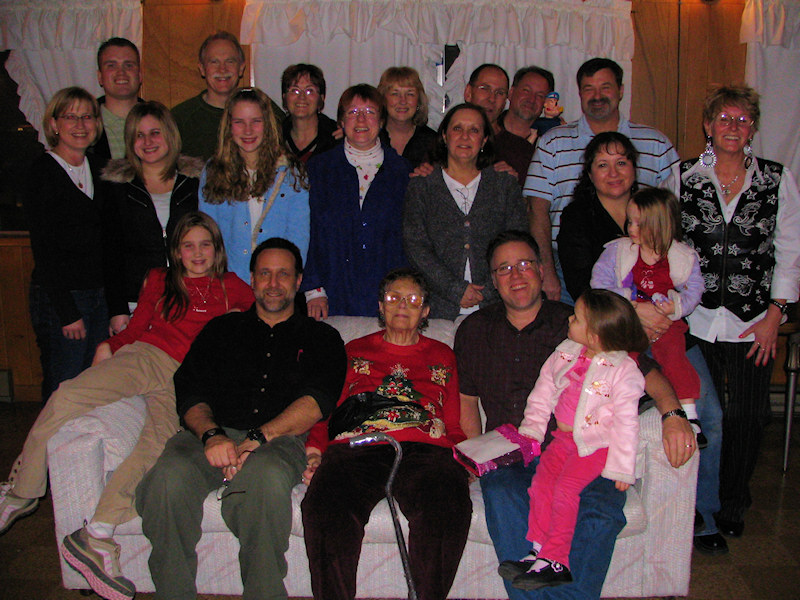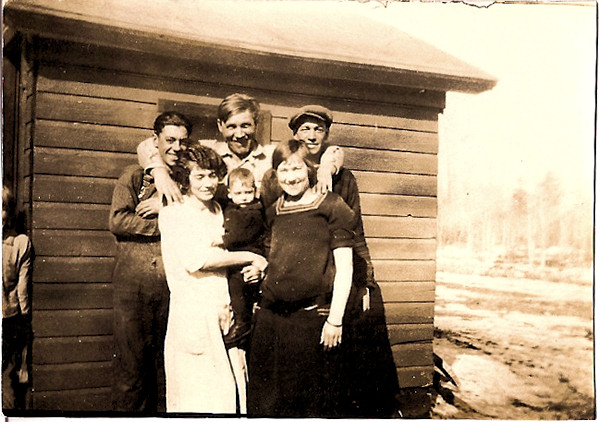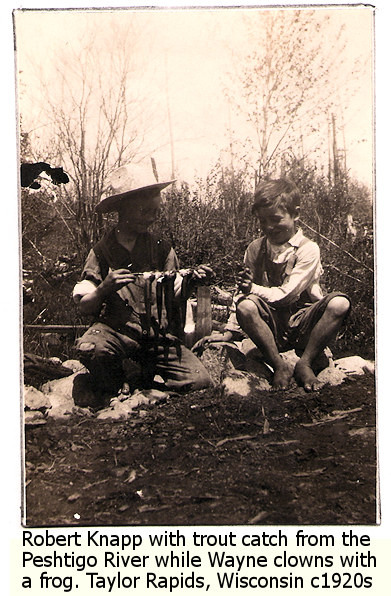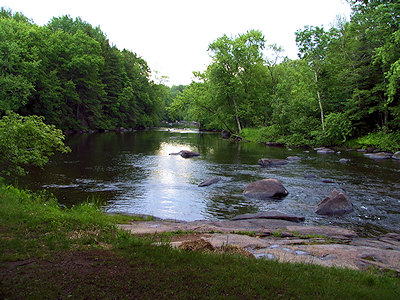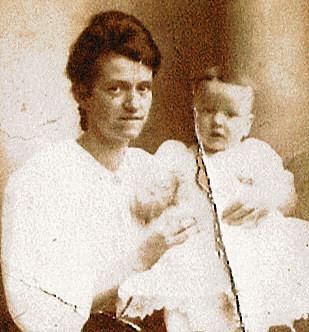The USS Arizona was officially launched from Virginian on April 3, 1917, where “she cleared the yard on that date for Norfolk, arriving there on the following day to join Battleship Division 8.” World War I had her staying close to US shores as “an oil-burner, she had not been deployed to European waters owing to a scarcity of fuel oil in the British Isles”. The USS Arizona had a short career in World War I, but ended her career as a major symbol of US history at Pearl Harbor on December 7, 1941.
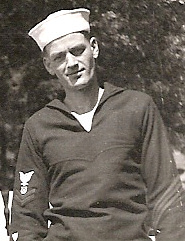
My grandfather, Howard William West, signed onto the USS Arizona before 1924, after World War I and during a time when the ship made a lot of voyages around the world to promote the defensive forces of the United States. Howard West was on the ship for about two to six years, transferring to the USS Oakridge in 1926. During his time on the USS Arizona, he served as a Private, working on the guns and keeping them in shape.
We’re not sure when Grandfather Howard West signed onto the USS Arizona. At the earliest it might have been in 1921. We have his photo albums filled with photographs of the Panama Canal, what appears to be South America, and images from Asia and Hawaii.
In 1921, the USS Arizona traveled from New York through Guantanamo Bay and the Panama Canal Zone, ending up in Peru where the ship was “visited by the president of Peru”. The ship returned to New York for overhaul and maintenance and then went to “Cape Charles with Army and Navy observers to witness the experimental bombings of the ex-German submarine U-117”. Another trip then followed to Panama and Peru where the Arizona became the flagship for the Battle Force, Atlantic Fleet, as part of the celebrations for the centennial year of Peruvian independence. On August 21, 1921, the USS Arizona arrived in San Diego to be based in San Pedro, California, the most likely time when Grandfather Howard West came on board.
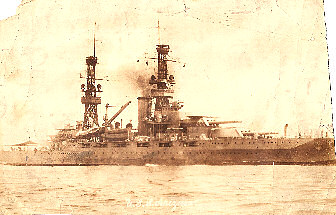
From 1921 until about 1935, the USS Arizona remained a flagship for the Pacific fleets, staying off the coast of southern California or in the Caribbean. According to the records, the USS Arizona participated in a “succession of fleet problems (the annual maneuvers of the fleet that served as the culmination of the training year), ranging from the Caribbean to the waters off the west coast of Central America and the Canal Zone; from the West Indies to the waters between Hawaii and the west coast.” Grandfather West’s journal below speaks of some of these maneuvers.
In 1924, a female stowaway, Madeline Blair, was caught. She exchanged favors for the free ride on the USS Arizona to San Pedro, California. According to Everything2, “Her actions resulted in the court martial of twenty-three crew members”, including one man in prison for 10 years. According to Paul Stillwell of the US Naval Institute:
From time to time, the ship went through the Panama Canal to operate in the Atlantic, and she returned to New York, where she was built. On one such trip in 1924 she acquired an unusual passenger, a young woman named Madeline Blair, who stowed away with the intent of traveling to California. She had the help of a considerable number of Arizona sailors who hid her away, brought food to her, and provided her with a degree of physical activity that is easy to imagine. She managed to stay hidden for a month. At times she ventured forth from her hiding places, sometimes brazenly. Eventually she was discovered and sent back to New York after demonstrating to one of the ship’s junior officers that she had learned to swear like a sailor. Those who had abetted her stowaway life wound up being court-martialed.
Private Howard W. West speaks of this on August 25, 1924, writing, “Was on a 12 to 4 watch in the sick bay over a gob in the Arizona Woman Case.”
Howard W. West was raised in a Catholic Orphanage in Portland, Oregon, until he was a teen. After leaving the orphanage, family stories tell of him lying about his age and joining the US Marines, where his fellow Marines took pity on him and taught him to read and write, though at the time he wrote this log book, his spelling was more phonetic than correct. The spelling errors have been left in, except where the sentence was not understandable. For example, he uses “when” for the word “went”.
The log is fairly simple, with small notes to record minor events in a day. What is interesting are the notes he makes of the ships he sees around him in the Bremerton Navy Yard, Washington, under repair, and the Navy battle training maneuvers he witnesses. The log book ends with the last entry here, a surprise ending and answer to a lot of our genealogy questions.
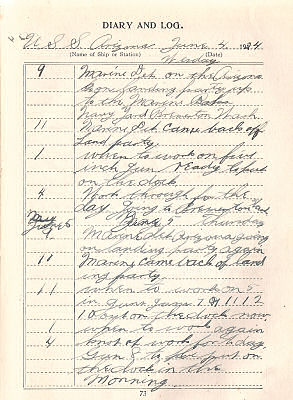
Personal Account Book, Diary and Log of
Pvt. Howard W. West, United States Marine Corps.
Log Book from June 3, 1924 – March 31, 1925
Journal Copyright 1913
Compiled by Sidney P. Vaughn. Pay Clerk, U.S. Navy
Price – 70 cents
For Sale By John Rothschild & Co.
San Francisco, California, Bremerton, Wash., New York, N.Y., Manila, P.I.
Handwritten Log by Pvt. Howard W. West, transcribed by Lorelle VanFossen March 2006
Tuesday, June 3, 1924
Name of Ship or Station: U.S.S. Arizona, US Navy Yard, Bremerton, Washington
9:30 Marine Det when on land party
10:30 Came back to the ship.
1 When to work taking the five inch guns abord. Going to put them on the dock in the Navy Yard.
4:30 Through work for the day. Gun 8 ready to be taken out of the fram to be put on the dock.
5 Work all done for the day.
Tuesday, June 3 1924 Arizona
At the Navy Yard Bremerton, Wash.
Wednesday, June 4, 1924
Name of Ship or Station: U.S.S. Arizona, US Navy Yard, Bremerton, Washington
9 Marine Det. on the Arizona on landing party up to the Marine Bah?? Navy Yard Bremerton Wash.
11 Marine Det. came back off land party
1 When to work on five inch gun ready to put on the dock
4 Work through for the day going to Bremerton Yard
Thursday, June 5, 1924
Name of Ship or Station: U.S.S. Arizona, US Navy Yard, Bremerton, Washington
9 Marine Det Arizona going on landing party again
11 Marine came back of landing party
11 When to work on 5 in. guns. Guns 7, 9, 11, 12, 10 out on the dock now.
1 When to work again
4 ? of work for the day. Gun 8 to be put on the dock in the morning.
Friday, June 6, 1924
Name of Ship or Station: U.S.S. Arizona, US Navy Yard, Bremerton, Washington
8 When to work on 5 five inch gun. Gun 8 was moves out on the dock a 9 this morning.
11 Quite work for the morning. All five inch guns of the ship ?
1 When back to work
3 Quite work for the day
4 When on 4 to 8 watch
5:30 Arizona when in to dry dock
6 When over the side with the five division
10 The bottom was all scrape.
11 Was through for the day. Some of Marine going on 48 hour leave. Got a letter from Fay Vaughn and Miss Goldstrom, N.Y.
Monday, June 10, 1924
Name of Ship or Station: U.S.S. Arizona, US Navy Yard, Bremerton, Washington
9 Left for Rifle Range Fort Lawton Wash when up on the Navy truck When in to camp at 12 o’clock
Tuesday, June 11, 1924
Name of Ship or Station: U.S.S. Arizona, US Navy Yard, Bremerton, Washington
11 When out to fire the rage. We was put in relay Five Marine and five gobs. Two Relays down in the huts and one camp duty and the next would fire the range. We would began at the 600 yds range and five ten shots low five then would fire 10 rapid fire then we would move down down to 300 yds fire five shots and five nealing and ten rapid fire then down to 200 hyds and fire 10 standing then ten rapid fire sitting. We got up in the morning at 5:45 eat at 6 out on the firing line by 6:45. Eat dinner at 12 out on the firing line at one eat supper at 5:30 was through for the day.
We sleep in tents, eaigh men to a tent. Some time the night was cold and some time worm. Good meals. Camp was about half hour ride from Seattle, Wash., and a little way from the goverment locks. The locks our on our same side as toes and pans.
Wednesday, July 9, 1924
Name of Ship or Station: U.S.S. Arizona, US Navy Yard, Bremerton, Washington
6:45 All got up and broke up camp, all morning. Clean up camp and getting things ready to move out. The U.S.S. New Mexico Marine took camp over.
1 o’clock Left camp walk down to the government Locks.
3 o’clock Left the Lock to come back to the U.S.S. Arizona. Took taxi to come back. The wind blowing and water roughs.
8:30 Moved abord Arizona.
Thursday, July 10, 1924
Name of Ship or Station: U.S.S. Arizona, US Navy Yard, Bremerton, Washington
1 o’clock Took over gun striker. Work all afternoon painting five inch guns. All five inch guns that Marines have whet paint.
Friday, July 11, 1924
Name of Ship or Station: U.S.S. Arizona, US Navy Yard, Bremerton, Washington
8 When to work on Gun 8 scraping paint of of bright work
10 U.S.S. Seattle when in dry dock.
1 When back to work again scraping bright work.
4:30 Arizona move father down the dock. Soon to be out of the way. Ship going in to dry dock.
Saturday, July 12, 1924
Name of Ship or Station: U.S.S. Arizona, US Navy Yard, Bremerton, Washington
8 When to work on gun.
10 When on watch in the sick bay wtching over a gob who is being tried for this woman that was aboard the Arizona from New York to Panama 3 (?)
1 No work on Saturday afternoon and Sunday
Monday, July 14, 1924
Name of Ship or Station: U.S.S. Arizona, US Navy Yard, Bremerton, Washington
8 When to work on five inch gun taking frame paint of the bright work
11:30 All paint of the bright work going to quite
1 When back to work
3:30 U.S.S. Mississippi came to Navy Yard of San Pedro, Calif.
Tuesday, July 15, 1924
Name of Ship or Station: U.S.S. Arizona, US Navy Yard, Bremerton, Washington
8 When to work
9:30 Marine Det. on Arizona got paid
10 When back to work
1 When to work
2:30 U.S.S. California came in to the Navy Yard from San Francisco, California
4 Quite work for the day.
8 When to work on gun. Their was going to be a landing party for Marine Det on bord the Arizona but was call of.
2 When back to work
3 Paint five inch dock gun on top side and was through for the day.
Thursday, July 17, 1924
Name of Ship or Station: U.S.S. Arizona, US Navy Yard, Bremerton, Washington
10 Left the Arizona on a 30 day leave. Arizona at Navy Yard.
10:30 Left Bremerton, Washington for Seattle, Washington
12:30 Arrive in Seattle, Washington.
12:30 Left Seattle, Washington, for home.
3 Arive home Marysville, Washington
8 When with my sister to the show
9:30 Show was out. Came home and when to bed.
Friday, July 18, 1924
Marysville, Washington
8 Got up. Eat breakfast
9:30 Was out in the garden spading up the gardenia
10:30 Burning up some old trash that was laying around the house and cleanup the store room and can shead.
Date: July 18, 1924
Marysville, Washington
1 When back to work out in the gardenias.
3 Was through in yard in the gardenias.
6 Water the lawn and was through.
Saturday, July 19, 1924
Marysville, Washingtion
10 When over to the Post Office and got the mail. Two letters. One from Portland and one from Long Beach, Calif.
Sunday, August 17, 1924
Name of Ship or Station: U.S.S. Arizona, US Navy Yard, Bremerton, Washington
11:30 Came back to the Arizona end of a 30 day leave.
Monday, August 18, 1924
Name of Ship or Station: U.S.S. Arizona, US Navy Yard, Bremerton, Washington
When on 4 to 8 watch Monday and Tuesday
Wednesday, August 20, 1924
Name of Ship or Station: U.S.S. Arizona, US Navy Yard, Bremerton, Washington
Battle fleet ?was cring? Arizona sound when ashore at Seattle (???)
Thursday, August 21, 1924
Name of Ship or Station: U.S.S. Arizona, US Navy Yard, Bremerton, Washington
When ashore again at one o’clock
Friday, August 22, 1924
Name of Ship or Station: U.S.S. Arizona, US Navy Yard, Bremerton, Washington
Arizona gave a dance abord ship from 8 to 12. Was on watch down in the Brig. Tbey brought down five drunk gobs and one Marine.
Saturday, August 23, 1924
Name of Ship or Station: U.S.S. Arizona, US Navy Yard, Bremerton, Washington
When home on a 48 hour leave.
Sunday, August 25, 1924
Name of Ship or Station: U.S.S. Arizona, US Navy Yard, Bremerton, Washington, to Tacoma, Washington
Arizona left Seattle, Washington, at 9:30. Arrive at Tacoma, Washington, at 12:30. Was on a 12 to 4 watch in the sick bay over a gob in the Arizona Woman Case.
September 1, 1924
Name of Ship or Station: U.S.S. Arizona, US Navy Yard, Bremerton, Washington, at sea towards California
4 When on 4 to 8 Captain Ordeley left Tacoma Washington, at 6:45 from Seattle Washington where we pick up the rest of the fleet.
9 Left Seattle, Washington, from San Francisco, California, from guard and band for the U.S.S. California and then left for California waters.
September 29, 1924
Name of Ship or Station: U.S.S. Arizona, San Pedro, California
12:00 Left San Francisco, California, for San Pedro, California
12:30 Eat dinner ship under way
1:30 General quarter when on relief Post Sipe all in ling
3:00 Came of general quarter relief and lay down and when to sleep.
5:30 Eat supper going to have darken ship to night
Monday, March 2, 1925
Name of Ship or Station: U.S.S. Arizona, San Pedro, California
Left San Pedro, California, at 9:15 for sea to met the East Coast fleet. Some when in lower California or South America. Came back to the ship from shore leave at 8:30. Had to go on watch. L.B. 9-12, the fleet making good time. Came of watch at 12:20 and lay around ship all afternoon.
8 When back on watch at 8 o’clock. Had moves on quarter deack and the wind was sho? blowing. Ship rolling a little. The fleet broke up and each ship take it’s own course.
9 Fleet came on to U.S.S. Seattle
12 When to bed.
Tuesday, March 3, 1925
Name of Ship or Station: U.S.S. Arizona, at sea off California
7:30 When on a 8 to 12 watch on L.B. on the quarter deck. The wind blowing strong and the ship is rolling bad.
9:45 General quarter all water tite doors close for a battle.
12 Came of watch and eat dinner and came down to the marine company and lay down and when to sleep till four.
6 Eat supper.
8 When back on watch and ship still rollen. Fleet taken straight course and each ship by itself.
12 Came of watch. Wind blowing strong.
12:15 When to bed. Could not sleep good. Hard night. First time sleep on ship for 6 month.
Wednesday, March 4, 1925
Name of Ship or Station: U.S.S. Arizona, at sea off California
8 When on 8-12 watch again. Ship making good time.
9 Quarter with Rifle from Marines
9:45 General quarters.
12:30 Came of watch fleet. Making straight course. Ship still rolling and wind blowing.
1 o’clock Eat dinner and lay around. Marine Corps has lunch.
6 Eat supper and lay around Marine Company
8:30 All light when out and general quarters. Group four has the 12 to 4 watch.
12 When on the first watch on five inch gun from 12 to 1:30 then came of and lay down by the gun and when to sleep.
4 Came below and turn in.
Thursday, March 5, 1925
Name of Ship or Station: U.S.S. Arizona, at sea off California
9 Quarter for muster
9:30 Dril call when on gun eaight five inch
10 General quarters when out on quarters deack and L.B. relives had to where gun makes for had gun attack tear gas.
10:30 Came of watch and lay around Marine company.
12 Eat dinner. Chicken. Was so darn hard you could not eat into it. The Navy got paid.
4 When on L.B. watch on quarter deack. The weather is geting a little wormer now. Ship still make straight course and still a rolling.
March 31, 1925

Name of Ship or Station: U.S.S. Arizona, San Pedro, California
9 Left the Arizona for San Pedro, California
9:20 Arrived San Pedro, California
9:55 Left San Pedro for Long Beach
10:30 Arrive Long Beach
11 When up to the house
1 Left Long Beach for L.A. Miss Vaughn, Miss Ruby Bird, and Pat West.
2 Arrived L.A. and when into the court house and got our license and by 5 of 3 we were married.
2:56 Left L.A. and came back to Long Beach and then when home.
– End of Log Book –

 I got my mother into doing some genealogy research on her side of the family and she’s uncovered the fact that we are directly related by blood to Nicholas Knapp (Knap) (1606-1670), who arrived with his brother, William Knapp, from England to settle in Connecticut. Thrilled with the historical connections dating back that far, we dove into our Knapp family history with glee, tracking back from Seattle, Washington, to Taylor Rapid, Michigan, Indiana, Ottawa, Canada, and to the East Coast of the United States.
I got my mother into doing some genealogy research on her side of the family and she’s uncovered the fact that we are directly related by blood to Nicholas Knapp (Knap) (1606-1670), who arrived with his brother, William Knapp, from England to settle in Connecticut. Thrilled with the historical connections dating back that far, we dove into our Knapp family history with glee, tracking back from Seattle, Washington, to Taylor Rapid, Michigan, Indiana, Ottawa, Canada, and to the East Coast of the United States. 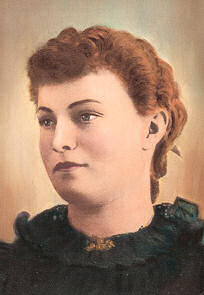
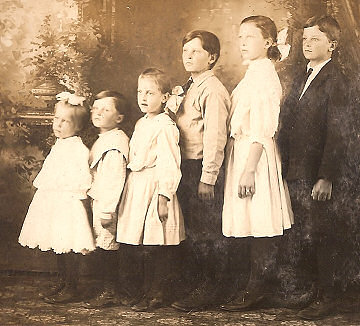
 In 1850, the Knapp family, descended from Nicholas Knapp (Knap) (c1606-1670), began in Connecticut about 1630. His bother, William, and his descendants spread across the soon to become United States, bringing the Knapp family name and bloodline with them. My core Knapp family ancestors made their way to Illinois and Wisconsin, was determined to embrace the frontier about 1860, ending up in South Dakota. It was a hard time with a lot of violence and attacks, so with his large family, Hans made his way slowly back Wisconsin. In the 1930s, Emma Beatrice (Primley) Knapp brought her 7 children to Oregon following the spread of logging camps and work, and eventually settled in Washington State.
In 1850, the Knapp family, descended from Nicholas Knapp (Knap) (c1606-1670), began in Connecticut about 1630. His bother, William, and his descendants spread across the soon to become United States, bringing the Knapp family name and bloodline with them. My core Knapp family ancestors made their way to Illinois and Wisconsin, was determined to embrace the frontier about 1860, ending up in South Dakota. It was a hard time with a lot of violence and attacks, so with his large family, Hans made his way slowly back Wisconsin. In the 1930s, Emma Beatrice (Primley) Knapp brought her 7 children to Oregon following the spread of logging camps and work, and eventually settled in Washington State. The West family arrived, we believe, in New York and moved soon after moved to Ontario, Canada. After many years farming there, David West moved with his family, following the path of the Quaker movement, to Raisin Township, Lenawee, Michigan. His sons, Abraham (c1786-1860), Levi (born c1790), Benjamin (born c1782), Jacob (born c1785), and Morgan (c1791-1870) came with him. The West family stayed in Raisin, Michigan, for several generations, marrying neighbors like the Farlins, Bowerman, Westgate, White, de Haviland, and more. As farming became more difficult in the late 1800s and early 1900s, many of David’s descendants started leaving Michigan, moving towards more work and hope.
The West family arrived, we believe, in New York and moved soon after moved to Ontario, Canada. After many years farming there, David West moved with his family, following the path of the Quaker movement, to Raisin Township, Lenawee, Michigan. His sons, Abraham (c1786-1860), Levi (born c1790), Benjamin (born c1782), Jacob (born c1785), and Morgan (c1791-1870) came with him. The West family stayed in Raisin, Michigan, for several generations, marrying neighbors like the Farlins, Bowerman, Westgate, White, de Haviland, and more. As farming became more difficult in the late 1800s and early 1900s, many of David’s descendants started leaving Michigan, moving towards more work and hope. The Hans Anderson family arrived on American soil from Fredriksvern, Norway, when he was about 7 years old between 1845-1851. They were part of the Lutheran Church movement from Norway to the United States. He and his family began in Manitowoc, Wisconsin, but he moved his family after his marriage to Sarah Olson in 1867 to South Dakota. The Anderson and Knapp family met in South Dakota. Times were tough in those years and the “frontier” of the Dakotas was particularly brutal, so Hans returned to Wisconsin by 1875, where his grandson, Raymond, a school teacher, married Nora Knapp, blending the two families. His many descendants stayed in Wisconsin, though eventually a few spread further afield.
The Hans Anderson family arrived on American soil from Fredriksvern, Norway, when he was about 7 years old between 1845-1851. They were part of the Lutheran Church movement from Norway to the United States. He and his family began in Manitowoc, Wisconsin, but he moved his family after his marriage to Sarah Olson in 1867 to South Dakota. The Anderson and Knapp family met in South Dakota. Times were tough in those years and the “frontier” of the Dakotas was particularly brutal, so Hans returned to Wisconsin by 1875, where his grandson, Raymond, a school teacher, married Nora Knapp, blending the two families. His many descendants stayed in Wisconsin, though eventually a few spread further afield.